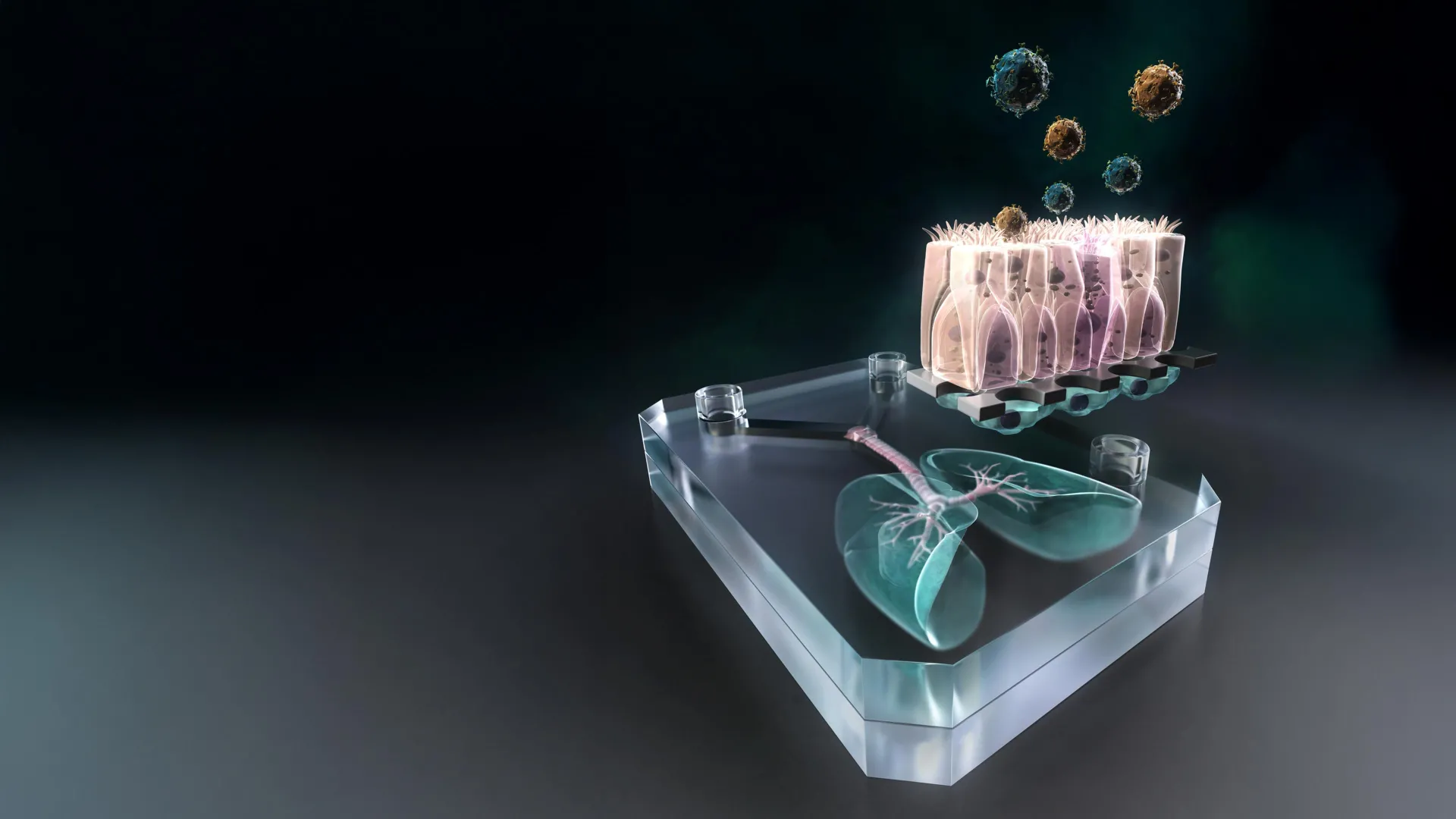This tiny lung-on-a-chip could predict—and fight—the next pandemic
Unraveling respiratory illnesses with iPSCs on microfluidic chips.
- Date:
- July 29, 2025
- Source:
- Kyoto University
- Summary:
- Scientists at Kyoto University have developed a groundbreaking "lung-on-a-chip" that can mimic the distinct regions of human lungs—airways and alveoli—to study how viruses like COVID-19 affect them differently. Powered by isogenic induced pluripotent stem cells (iPSCs), the system offers a high-fidelity way to model personalized immune responses and test drug effectiveness. This innovation opens the door to precision medicine, deeper understanding of emerging viruses, and even modeling of other organs in the future.
- Share:

Respiratory infections such as COVID-19 have been responsible for numerous pandemics and have placed a substantial burden on healthcare systems. Such viruses can cause significant damage to our lungs, especially to the proximal region, or airway, and distal region, also known as the alveoli.
The responses of different lung regions to such infections are varying and complex, so accurately replicating them using traditional models, such as animals and simple in vitro systems, poses a challenge.
To solve this problem, a team of researchers at Kyoto University has developed a micro physiological system, or MPS, capable of emulating different regions of human lungs. Specifically, their device can simulate the airway and alveoli to investigate viral pathologies. Coupled with isogenic iPSCs, the team is preparing for more personalized and accurate treatment of respiratory diseases.
"Our iPSC-derived lung chips enable us to model the distinct responses of proximal and distal lung regions, derived from an isogenic source to respiratory virus infections," states the lead author Sachin Yadav, a PhD student at Kyoto University.
The team's research provides a more accurate platform for studying tissue- and virus-specific disease mechanisms, as well as for evaluating drug effectiveness. Moreover, their approach holds significant promise for addressing future pandemics.
"The insights gained can be used to develop models of other human organs and multi-organ systems, facilitating the study of organ interactions," notes team leader Ryuji Yokokawa.
"The ability to accurately replicate the variations in host responses to different viruses and lung regions can significantly enhance our understanding of emerging viruses and facilitate early drug screening," says senior researcher Takeshi Noda.
"Integrating iPSCs into our MPS offers unparalleled advantages, with the cells providing benefits such as personalized medicine and isogenic models," adds Shimpei Gotoh, another senior team member.
This chip system has potential applications beyond viral infections, and could be used to enhance personalized medicine by enabling the use of patient-specific iPSCs to study other conditions as well.
Story Source:
Materials provided by Kyoto University. Note: Content may be edited for style and length.
Journal Reference:
- Sachin Yadav, Kazuya Fujimoto, Toru Takenaga, Senye Takahashi, Yukiko Muramoto, Ryuta Mikawa, Takeshi Noda, Shimpei Gotoh, Ryuji Yokokawa. Isogenic induced-pluripotent-stem-cell-derived airway- and alveolus-on-chip models reveal specific innate immune responses. Nature Biomedical Engineering, 2025; DOI: 10.1038/s41551-025-01444-2
Cite This Page: